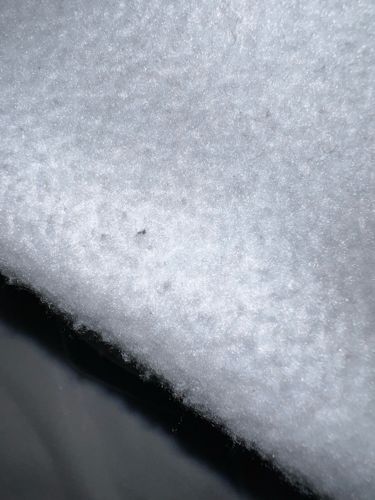Snow Flea or Springtail
Scientific Name: Hypogastrura nivicola
Order & Family: Collembola (Order), Hypogastruridae (Family)
Size: Approximately 1-3 mm in length.

Natural Habitat
Found on snow and ice surfaces, especially during winter thaws, feeding on fungal spores, algae, and detritus.
Diet & Feeding
Primarily detritivores, feeding on decaying organic matter, fungi, algae, and bacteria found on the snow surface.
Behavior Patterns
Known for their ability to jump using a furcula (a spring-like appendage) on their abdomen. They are active in cold temperatures, even below freezing, due to glycerol in their hemolymph acting as an antifreeze. Often seen in large aggregations, resembling specks of soot on the snow.
Risks & Benefits
They pose no risk to humans or pets. They are beneficial for breaking down organic matter and contributing to nutrient cycling in cold environments. They are also a food source for other small invertebrates.
Identified on: 10/10/2025